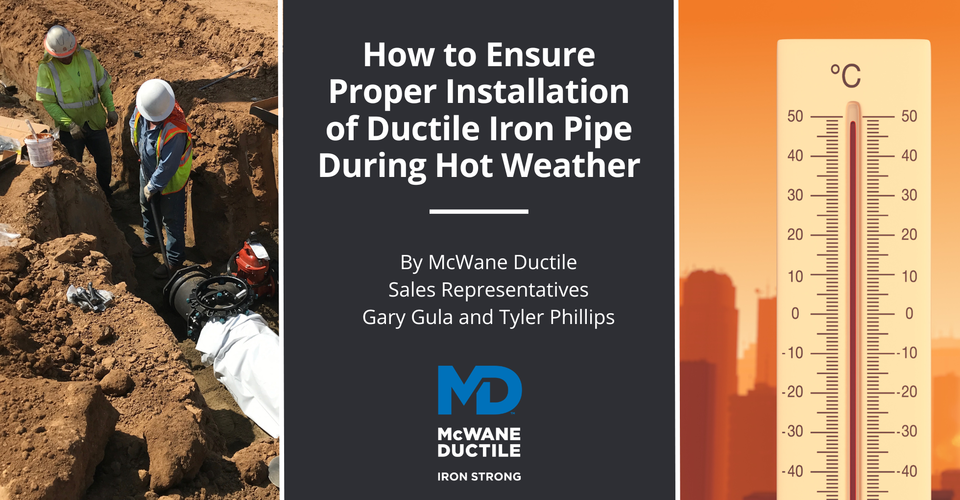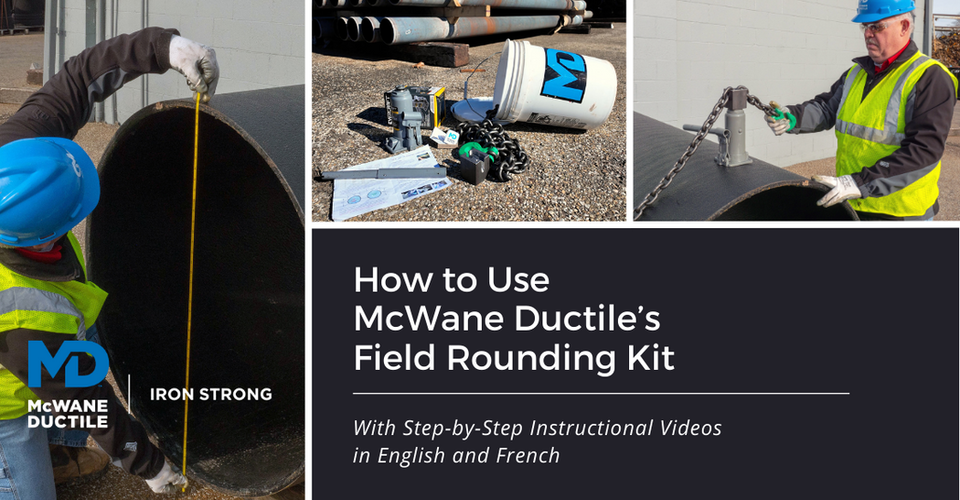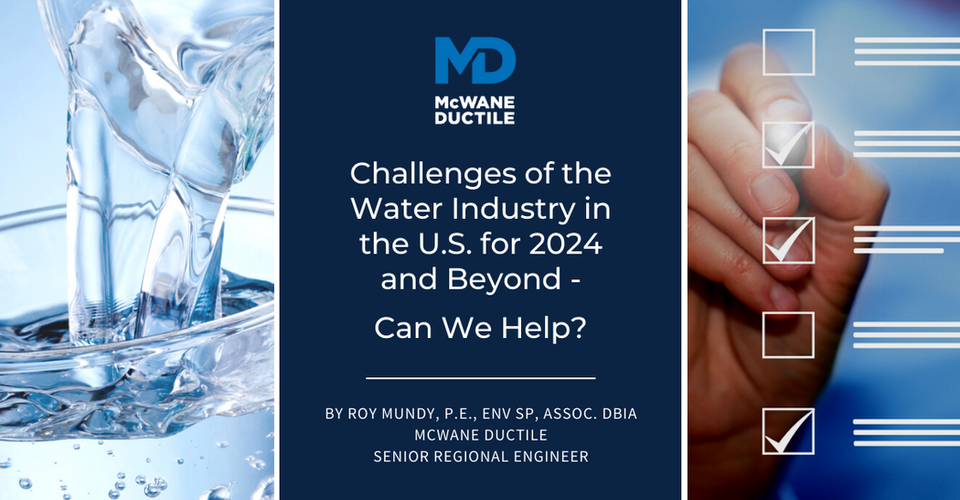Water and Wastewater treatment plants typically are the largest energy consumers for municipalities. They account for 30 to 40% of total energy consumption. (Source: US EPA “Energy Efficiency for Water Utilities”, April 24, 2017)
Since water and sewer infrastructure plays such a significant role in the total energy consumption of municipalities, more emphasis should be placed on energy savings when selecting pipe materials.
All too often, utilities are unaware of the potentially significant energy savings over the life cycle of the pipe material. Many do not do the proper flow rate comparisons and instead focus solely on the price per foot on the bid form. They ultimately pay more in the long run.
When it comes to the INSIDE DIAMETER of water pipelines, bigger is better when a utility looks at the monthly electric bills that are paid for pumping water throughout the system. Why is this the case?
4 Factors That Affect Water Resistance Through a Pipeline
When water flows through a pipeline, there are four factors that affect the resistance to that flow—
1) The velocity of the water flow
2) The roughness of the interior surface of the pipe
3) The length of the pipeline and
4) The INTERNAL DIAMETER of the pipe.
When all of these variables are identified, they can be placed into the well known Hazen-Williams Formula to determine the head loss that is occurring in the pipeline. Because the value of the inside diameter appears in the denominator of the Hazen-Williams formula, the larger the inside diameter, the smaller the head loss.
So what is the practical side of this evaluation to the water utility?
In order to finally get water to customers at adequate pressure, head losses must be overcome by using pumps to apply energy. This energy is a cost to the water utility in the form of their electric bill. The less energy that must be applied, the lower the electric bill to the utility.
These annual cost savings can easily be calculated using the head loss value and inserting that value into a pumping cost equation such as that used in the University of Michigan Study “A Framework to Evaluate the Life Cycle Costs and Environmental Impacts of Water Pipelines.” (ASCE Conference Proceedings, Pipelines 2016) It can even be further extended by evaluating pumping cost savings over many years using a present worth approach.
All of these calculations can be conveniently performed on the Energy Savings calculator on the McWane Pocket Engineer where inside diameters of different pipeline materials are evaluated against that of Ductile Iron.
Due to its larger inside diameter, ductile iron outperforms other competing pipe material when it comes to flow rates in the pipeline.
Calculating Head Loss
I mentioned earlier the roughness on the interior surface of the pipe being a factor in calculating head loss. This is commonly known as the “C” factor of the pipe.
It should be noted that although other pipe materials have higher “C” factors, thus a smoother inside surface, this component doesn’t affect pipeline flows nearly to the degree as increased inside diameter.
It has also been found by research that the “C” factor of ductile iron pipe remains consistent even throughout many years of service.
Now let’s look at an example wherein a utility is going to install a mile of 8” pipeline in a subdivision, and the materials being considered are Ductile Iron Pipe and PVC.
In determining the energy costs to the utility of each respective material, the project model as noted in the information below has been established:
- 8” DI Pipe vs. 8” PVC Pipe
- Pipeline Length: 5,280 ft.
- C Factor: 140
- Flow Rate: 695 GPM ( Tech Park Demand)
- Unit Power Cost: 0.06 $/kWh
- Pump Rate: 24 Hr/Day
- Pump Efficiency: 70%
- Design Life: 100 Years
- Rate of Return: 5%
- Inflation Rate: 4%
By going through the steps of first determining the respective head loss that must be overcome in each pipeline, then converting that into pumping costs the utility will incur based on the assumptions listed, one finds that using ductile iron pipe will result in a cost savings to the utility of over $80,000 during the 100 year estimated service life of the ductile iron pipe. The reason for this cost savings to the utility is that 8” Ductile Iron Pipe ( Class 350) has a 9.76% larger inside diameter than does 8” PVC pipe (DR-14).
Calculating Savings
Cost savings to the water utility can even further be enhanced when looking at larger size pipelines that typically carry larger flows to the system.
- Length of pipe: 30,000 ft.
- Flow rates: 6,000 gpm
- Unit power cost: $0.10/kwh
- Pump efficiency: 70%
- Pump rate: 24 hrs/day
- Design life: 100 years
- Rate of return: 5%
- Inflation rate of power cost: 3%
Using the same approach in calculating the cost savings to the utility when considering a 24” pipeline under the assumptions above, you find that respectively the use of Ductile Iron Pipe will result in a $1,213,307 present worth savings over PVC pipe, a $672,178 present worth savings over steel & concrete pipe, and a $3,208,741 present worth savings over HDPE.
The majority of a utility’s capital investment is underground. When planning for investment in the important component of your system, ALL factors should be considered. Energy Savings is one very important one that should be considered.











